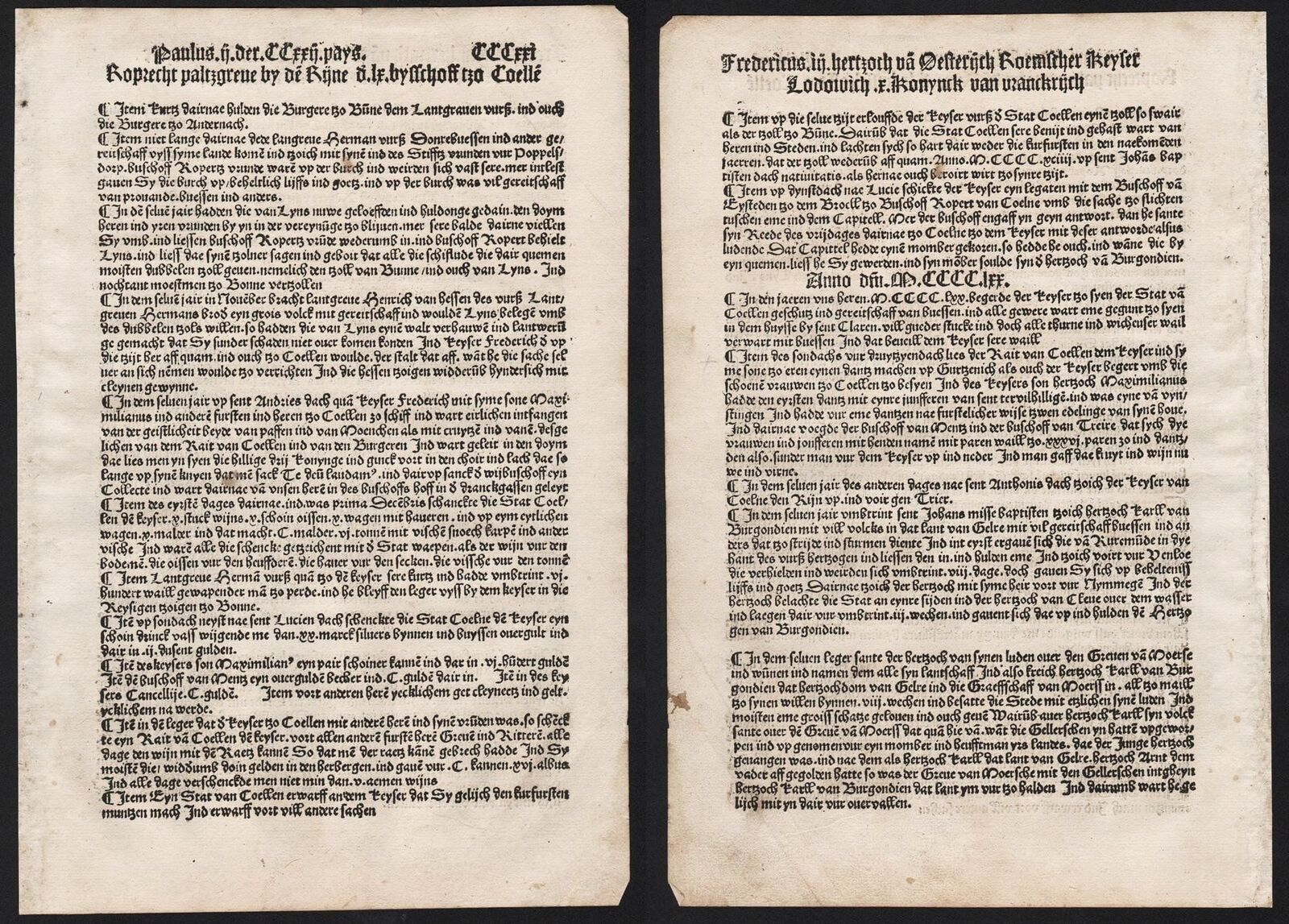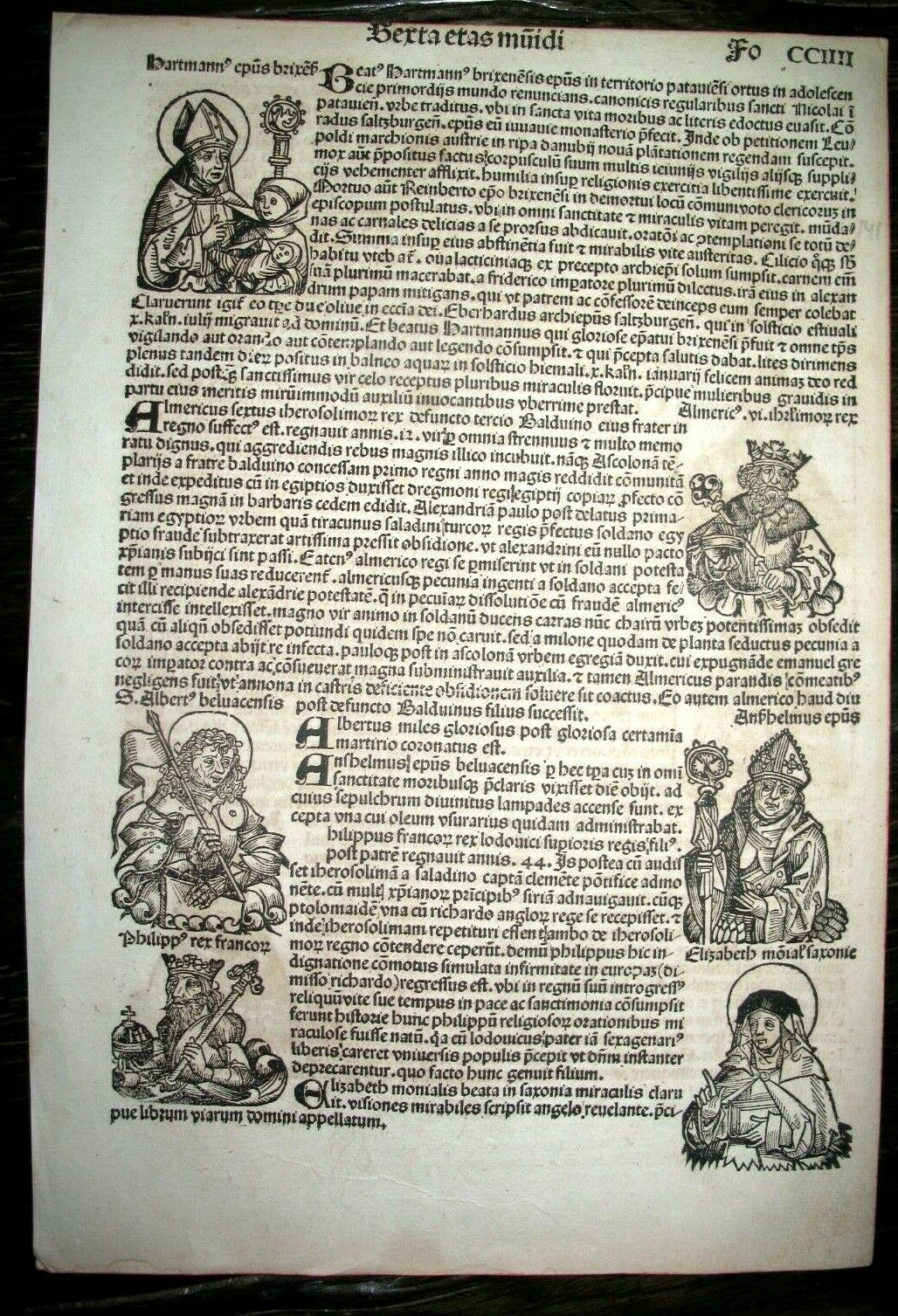-40%
Page 32 of Incunable Nuremberg chronicles , done in 1493 . Jew Menorah
$ 137.28
- Description
- Size Guide
Description
This is the page 252 from the famous book the chronichles of nuremberg , so far so on the history of the world as they sawuntil 1493
FOLIO XXXII recto
The Lord also caused to be made a candlestick of pure gold. The shaft or stem was fastened to a base of iron, and was ornamented with golden rods or pipes joined together; and where the heads of the rods came together, there were two knops or cups in the form of a nut; and out of the knops came bent flowers like lilies; and in the same field between the knops and the lilies was a circular knop; and likewise on the shaft or stem there were five rods, joined together in like manner, resulting in four grooves. And each had two knops, joined together, and the knops were beside each other; and so the lilies. But the standard went straight up, and it had three feet. And up above were six rods coming out of the stem, three to one side and three to the other, bent upward, one over the other, and reaching to the height of the stem. And on the stem or standard were four knops, resembling a nut, which some call little apples; that is, two knops were set, one against the other, and together they formed a little apple. Rabbi Solomon writes that these knops were elongated, and so constituted that the rods went through them, and that the purpose of the knops and the lilies was merely to ornament the candlestick. And this candlestick was (as Josephus says) made of seventy parts, assembled as a standard; and it was always made with seven heads of equal height.
FOLIO XXXII verso
And on each head was to be a golden lamp resting on the last or highest knop of each branch. And so there were seven vessels of gold with which the oil was poured into the lamps. There were also at the hand snuffers of pure gold, with which the lamps were trimmed and extinguished and the burnt matter removed; and there were vessels with water into which this burnt matter was thrown so that it would not smoke. Together these implements were to be of the weight of one pound of gold; but the Hebrews say a hundred weight. No one knows the exact weight; but no doubt a large quantity of gold was required to create so great a work. And the candlestick was placed to the south, over against the table, not directly but to the side.[The candlestick is to be thought of as an elaborately constructed candelabra, with places for seven lamps or lights. Like the cherubim it consisted of beaten work, elaborately wrought by some hand process. It had a main stem or shaft, rising up from a triangular pedestal or base. The main stem and branches were ornamented with flower-shaped cups into which the spherical knops were set, and both the knops and cups were further connected with flowers, or blossoms, all together serving the purpose of ornamentation. Three branches came out of the main stem to either side. These, with the stem, furnished at their tops the places for the seven lamps. The entire candlestick was to be wrought out of one piece of pure gold, so that the completed work should form one solid piece. It was to be placed so that it would throw light to the opposite side of the room. The description (Exodus 35:31-40) is obscure. The exact form of the shafts, or branches, and of the knops and flowers is left to conjecture. No dimensions are given for the whole or any of its parts. A conspicuous object among the spoils of Jerusalem, pictured on the Arch of Titus at Rome, is a figure of a candlestick, with its central shaft and six arms. It is not certain that this is an exact copy of the one captured at the fall of the temple, for the Roman artist may have modified some of its parts; but in its main outline it probably represents the original. The exact form of the snuffing tools and dishes is nowhere described.]
Aprox Size:
420x297 mm // 11,693 x 16,535 inches (is the original size, but this one was bought on 1991 to an East museum in Europe, so it was "restaurated" , in fact they only trim the borders to make square and fix a rip in the lower place of the page with white tape.......i would not call this restauration, but this is whar they did)
From
Hartmann Schedel
Original Page
From
Hartmann Schedel
Original Page











